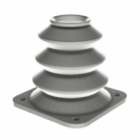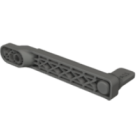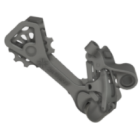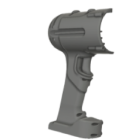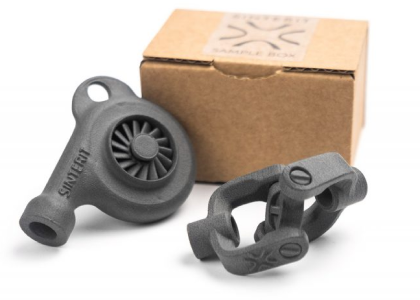3D printing vs traditional manufacturing
As 3D printing continues to evolve, its role in the broader manufacturing ecosystem is shifting from experimental to essential. But does this mean it will replace traditional manufacturing methods altogether? Not quite — at least, not yet. Instead, additive manufacturing and traditional production often serve different needs. Understanding where each fits is key to making smart, future-proof decisions.
Different strengths for different needs
Traditional manufacturing methods — such as CNC machining, injection molding, and casting — are ideal for mass production. Once the tooling is in place, they offer low unit costs and fast cycle times. But this comes at the price of long lead times, design inflexibility, and high upfront investment.
By contrast, 3D printing thrives on complexity, agility, and customization. It allows parts to be built directly from digital files, without molds or tooling. This enables faster prototyping, on-demand production, and the ability to iterate designs without resetting the entire process.
In short: traditional manufacturing is optimized for volume, while 3D printing is optimized for flexibility.
Is 3D printing cheaper than manufacturing?
The cost question depends on context. For low- to mid-volume production, 3D printing often proves more economical — especially when tooling costs, iteration cycles, and design changes are factored in. It also reduces warehousing needs, thanks to digital inventories and print-on-demand workflows.
However, for large-scale production of simple parts, traditional manufacturing still wins on cost per unit. But the break-even point is shifting. With faster printers, cheaper materials, and more automated post-processing, 3D printing is increasingly competitive — even beyond prototyping.
Will 3D printing replace traditional manufacturing?
Rather than replacing traditional manufacturing, 3D printing is becoming a strategic complement to it. Many companies now use hybrid workflows, combining the scalability of conventional methods with the agility of additive. This allows them to bring products to market faster, validate designs earlier, and bridge the gap between prototype and production.
In highly regulated, high-value sectors like aerospace, automotive, and medical, 3D printing is already producing end-use components that traditional processes can’t easily match — due to geometry, weight, or material limitations.
In other words, 3D printing is not about replacement — it’s about expansion. It introduces new possibilities that conventional tools were never designed for.
Looking ahead
As technologies mature, the line between 3D printing and traditional manufacturing will blur. Machines are becoming faster. Materials are becoming stronger. Costs are dropping. The biggest shift won’t be in hardware, but in how engineers, designers, and decision-makers think about production.
Rather than asking “Which process is better?”, the smarter question is: “Which process gives us the most freedom, control, and value — today and tomorrow?”
Explore also
- Is 3D printing the future?
- What is the future of 3D printing?
- Future uses of 3D printing
- What will 3D printers be used for in the future
- Trends in additive manufacturing
- AI in 3D printing
- Automation 3D printing
Related categories




